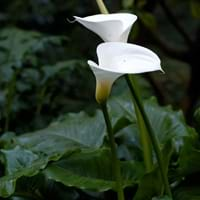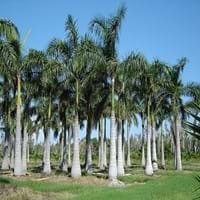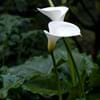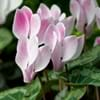Life Span
Perennial
Perennial
Type
Bulb, Flowering Plants
Palm or Cycad
Origin
South Africa, Swaziland
Australia
Types
Passionfruit, Fire glow, Gem rose, Blaze, Crystal blush
Coconut and Dates
Number of Varieties
Not Available
Habitat
Swamps
tropical environments
USDA Hardiness Zone
8-10
Not Available
AHS Heat Zone
10-4
Not Available
Sunset Zone
2a, 2b, 5, 6, 8, 9, 12, 13, 14, 15, 16, 17, 18, 19, 20, 21, 22, 23, 24
Not available
Habit
Clump-Forming
Upright/Erect
Flower Color
Blue, Dark Purple, Light Purple, Red, White
White, Yellow
Flower Color Modifier
Bicolor
Bicolor
Fruit Color
Not Available
Orange, Orange Red
Leaf Color in Spring
Dark Green
Brown
Leaf Color in Summer
Green, Dark Green
Not Available
Leaf Color in Fall
Green, Dark Green
Not Available
Leaf Color in Winter
Green, Dark Green
Not Available
Leaf Shape
Arrowhead
feather-shaped
Plant Season
Autumn, Spring, Summer
Spring, Summer, Fall, Winter
Sunlight
Full Sun, Part sun, Partial shade
Bright Indirect Sunlight
Growth Rate
Medium
Not Available
Type of Soil
Clay, Loamy
Light, Loose, Moist
The pH of Soil
Neutral, Slightly Acidic
Acidic
Soil Drainage
Average
Well drained
Bloom Time
Spring, Summer
All year
Repeat Bloomer
Yes
Not Available
Tolerances
Wet Site
Not Available
Where to Plant?
Container, Pot
Ground, Pot
How to Plant?
From bulbs, From Rhizomes, Seedlings, Transplanting
Rooted stem cutting, Seedlings
Plant Maintenance
Medium
Low
Watering Requirements
Over-watering can cause leaf problems or root diseases, Requires a lot of watering
Average Water Needs, Needs 2-3 times watering per week, Water daily during growing season
In Summer
Lots of watering
Lots of watering
In Spring
Moderate
Moderate
In Winter
Average Water
Less Watering
Soil pH
Neutral, Slightly Acidic
Neutral
Soil Type
Clay, Loamy
Not Available
Soil Drainage Capacity
Average
Well drained
Sun Exposure
Full Sun, Part sun, Partial shade
Not Available
Pruning
Prune to stimulate growth, Remove dead or diseased plant parts, Remove deadheads
Remove damaged leaves, Remove dead branches, Remove dead leaves, Remove old, faded fronds
Fertilizers
All-Purpose Liquid Fertilizer
Boron, EDTA iron, Maganese, Magnesium, Nitrogen, Potassium
Pests and Diseases
Armillaria mellea, Gray mold, Leaf spot, Powdery mildew, Pythium rot, Rhizoctonia crown rot, Root rot, Thripes
Red blotch
Plant Tolerance
Drought
Not Available
Flower Petal Number
Single
Not Available
Edible Fruit
No
Not Available
Fragrant Flower
Yes
Not Available
Fragrant Fruit
No
Not Available
Fragrant Leaf
No
Not Available
Fragrant Bark/Stem
No
Not Available
Showy Foliage
Yes
Not Available
Showy Bark
No
Not Available
Foliage Texture
Coarse
Not Available
Foliage Sheen
Glossy
Glossy
Invasive
No
Not Available
Self-Sowing
No
Not Available
Attracts
Not Available
Bees, Bugs, Insects, Mice, Rats, Rodents
Allergy
Diarrhea, Intestinal gas, Vomiting
Asthma, Rhinitis
Aesthetic Uses
Beautification, Bouquets
Decorating walls, Landscape Designing, Showy Purposes
Beauty Benefits
Not Available
Making cosmetics
Environmental Uses
Air purification
Air purification, Shadow Tree
Medicinal Uses
Not Available
Aging, Brain disease, Cancer, Cyanide Poisoning, High blood pressure, High cholestrol, Malaria, Metabolic disorders, Vitamin A, Weight loss
Part of Plant Used
Flowers
Fruits, Leaves, Tree trunks
Other Uses
Showy Purposes
Biodiesel, For making oil, Jelly, Sometimes used for making wine, Used in salads, Wax
Used As Indoor Plant
No
No
Used As Outdoor Plant
Yes
Yes
Garden Design
Not Available
Tropical
Botanical Name
Zantedeschia Aethiopica
ARCHONTOPHOENIX
Common Name
Calla Lily
Palm
In German
Calla-Lilien-
Palme
In French
Lys calla
Paume
In Greek
Calla κρίνος
Παλάμη
In Portuguese
Calla
Palma
In Polish
Calla Lily
Palma
In Latin
Calla Lilium
Vero
Phylum
Magnoliophyta
Magnoliophyta
Class
Liliopsida
Liliopsida
Order
Alismatales
Arecales
Genus
Zantedeschia
Archontophoenix
Clade
Angiosperms, Monocots
Angiosperms, Commelinids, Monocots
Tribe
Zantedeschieae
Areceae
Subfamily
Aroideae
Arecoideae
Difference Between Calla Lily and Palm Tree
If you are confused whether Calla Lily or Palm Tree are same, here are some features about those plants to help you choose better. Many people think that these two plants have the same characteristics, but one can see Calla Lily and Palm Tree Information and learn more about it. Fertilizers required for proper growth of Calla Lily are All-Purpose Liquid Fertilizer, whereas for Palm Tree fertilizers required are Boron, EDTA iron, Maganese, Magnesium, Nitrogen and Potassium. Hence, one should know the basic difference between Calla Lily and Palm Tree if you are planning to have them in your garden to enhance its beauty.
<
Flowering PlantsImportance of Calla Lily and Palm Tree
Want to have the most appropriate plant for your garden? You might want to know the importance of Calla Lily and Palm Tree. Basically, these two plants vary in many aspects. Compare Calla Lily and Palm Tree as they differ in many characteristics such as their life, care, benefits, facts, etc. Every gardener must at least have the slightest clue about the plants he wants to plant in his garden. Compare their benefits, which differ in many ways like facts and uses. The medicinal use of Calla Lily is Not Available whereas of Palm Tree is Aging, Brain disease, Cancer, Cyanide Poisoning, High blood pressure, High cholestrol, Malaria, Metabolic disorders, Vitamin A and Weight loss. Calla Lily has beauty benefits as follows: Not Available while Palm Tree has beauty benefits as follows: Not Available.
Compare Facts of Calla Lily vs Palm Tree
How to choose the best garden plant for your garden depending upon its facts? Here garden plant comparison will help you to solve this query. Compare the facts of Calla Lily vs Palm Tree and know which one to choose. As garden plants have benefits and other uses, allergy is also a major drawback of plants for some people. Allergic reactions of Calla Lily are Diarrhea, Intestinal gas and Vomiting whereas of Palm Tree have Asthma and Rhinitis respectively. Having a fruit bearing plant in your garden can be a plus point of your garden. Calla Lily has no showy fruits and Palm Tree has showy fruits. Also Calla Lily is flowering and Palm Tree is flowering. You can compare Calla Lily and Palm Tree facts and facts of other plants too.





